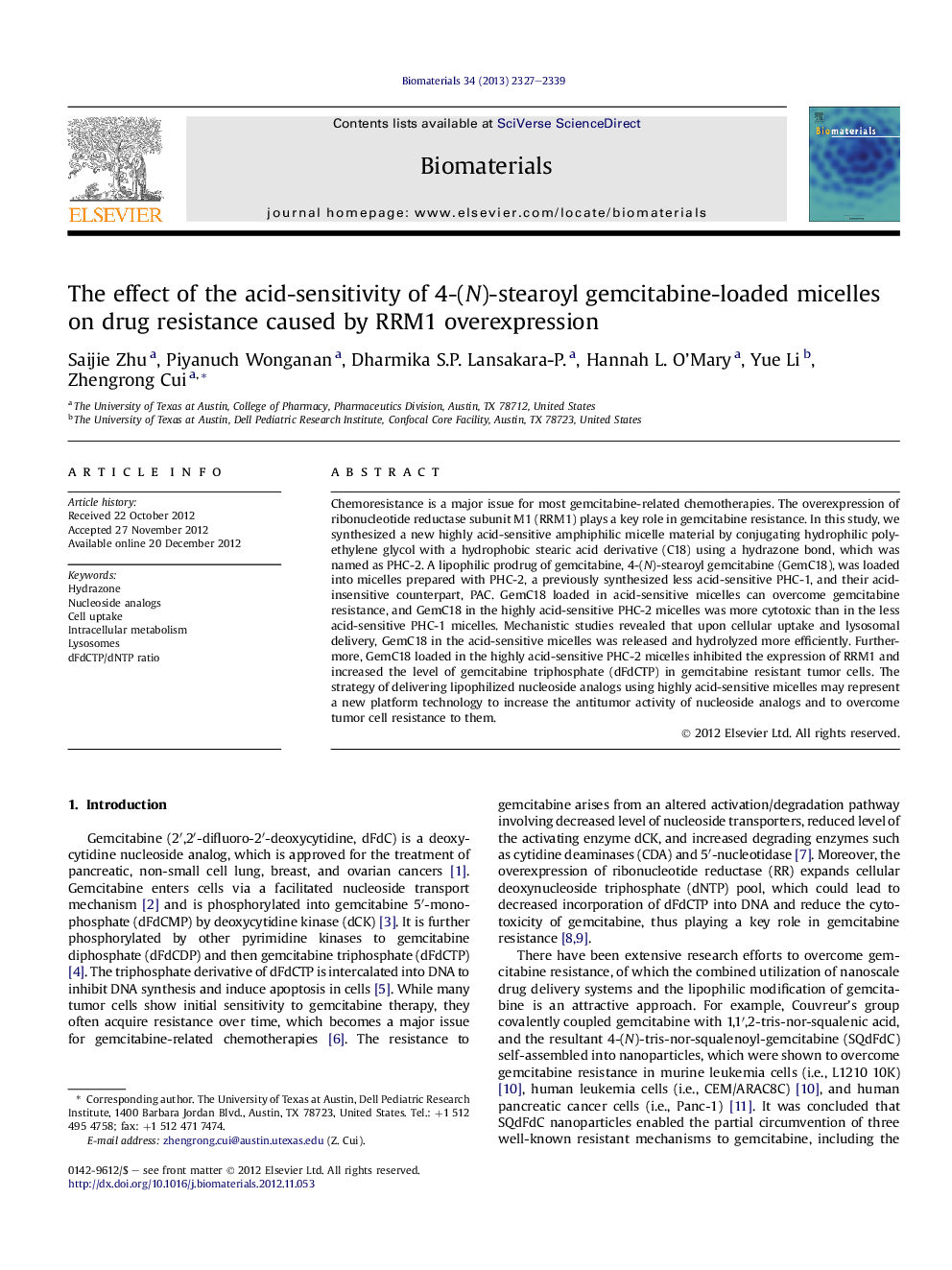| Article ID | Journal | Published Year | Pages | File Type |
|---|---|---|---|---|
| 10228870 | Biomaterials | 2013 | 13 Pages |
Abstract
Chemoresistance is a major issue for most gemcitabine-related chemotherapies. The overexpression of ribonucleotide reductase subunit M1 (RRM1) plays a key role in gemcitabine resistance. In this study, we synthesized a new highly acid-sensitive amphiphilic micelle material by conjugating hydrophilic polyethylene glycol with a hydrophobic stearic acid derivative (C18) using a hydrazone bond, which was named as PHC-2. A lipophilic prodrug of gemcitabine, 4-(N)-stearoyl gemcitabine (GemC18), was loaded into micelles prepared with PHC-2, a previously synthesized less acid-sensitive PHC-1, and their acid-insensitive counterpart, PAC. GemC18 loaded in acid-sensitive micelles can overcome gemcitabine resistance, and GemC18 in the highly acid-sensitive PHC-2 micelles was more cytotoxic than in the less acid-sensitive PHC-1 micelles. Mechanistic studies revealed that upon cellular uptake and lysosomal delivery, GemC18 in the acid-sensitive micelles was released and hydrolyzed more efficiently. Furthermore, GemC18 loaded in the highly acid-sensitive PHC-2 micelles inhibited the expression of RRM1 and increased the level of gemcitabine triphosphate (dFdCTP) in gemcitabine resistant tumor cells. The strategy of delivering lipophilized nucleoside analogs using highly acid-sensitive micelles may represent a new platform technology to increase the antitumor activity of nucleoside analogs and to overcome tumor cell resistance to them.
Related Topics
Physical Sciences and Engineering
Chemical Engineering
Bioengineering
Authors
Saijie Zhu, Piyanuch Wonganan, Dharmika S.P. Lansakara-P., Hannah L. O'Mary, Yue Li, Zhengrong Cui,
